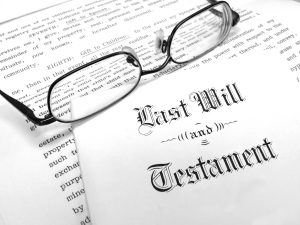 While the thought of preparing a Will may be off-putting, ensuring that your assets are protected and passed on to loved ones should be a concern of every individual. But what happens if you dispose of property in the Will after it is drafted? The key to solving such an issue is recognizing that not only should an individual draft a Will, they should also develop an entire estate plan for taking care of their loved ones.
While the thought of preparing a Will may be off-putting, ensuring that your assets are protected and passed on to loved ones should be a concern of every individual. But what happens if you dispose of property in the Will after it is drafted? The key to solving such an issue is recognizing that not only should an individual draft a Will, they should also develop an entire estate plan for taking care of their loved ones.
Often times, an individual’s failure to update their Will or mismanagement of their assets can lead to a situation that runs counter to their intended disposition upon death. In determining what will happen to the property, one must look to the doctrine of “ademption.” Ademption occurs when the property that the Will leaves to someone is no longer present in the Testator’s estate when the Testator dies.
There are two types of ademption. The first, and rarely an issue when it comes to estate planning, is “ademption by satisfaction.” This occurs when the property is not in the Testator’s estate because it was already intentionally transferred by the Testator to the beneficiary during his or her lifetime. In that situation, there is no issue because the Testator’s intent was satisfied by their transfer to the beneficiary.
However, the second type of ademption, “ademption by extinction,” can lead to a disposition against the Testator’s intent. Ademption by extinction occurs when the property the Testator wanted to transfer to the beneficiary is no longer in the Testator’s estate. This could occur if the property has been sold, repossessed, substantially changed, or, in the worst case, destroyed. In these cases, the provision in the Will would be extinguished and the beneficiary would receive nothing under the Will.
While there is no legislation in New York that directly prevents ademption by extinction, certain bequests may be protected under New York law. For instance, New York’s Estates, Powers and Trust Law (EPTL) Section 3-4.2 protects situations whereby the Testator agreed to the sale or disposition of the property before their death. In those situations, the provision of the Will would not extinguish, but rather, the Beneficiary would take the rights created by such agreement. A simplified example of this may be if a Testator sold a vehicle intended to be given to a beneficiary in his or her will. The beneficiary may be entitled to the proceeds of the sale of the vehicle.
Another protection in New York law would be partial ademption. Partial ademption occurs when part or some of a bequeathed asset is not a part of the estate, such as if a collection has been broken up or sold. In this case, the beneficiary would still receive whatever part of the collection is in the estate.
Unlike other states, New York only provides limited protections when it comes to ademption. While the above protections may help in very limited situations, there is no better protection than a well-developed estate plan. Failure to properly plan may leave your loved ones without the protections you intended when drafting your Will.
Whether you are looking to update a current plan or establish a comprehensive estate plan for the first time, it is imperative that you consult the guidance of an experienced New York estate planning attorney. The attorneys at Wingate, Kearney & Cullen, LLP are experienced estate planning lawyers who can help you create an estate plan that can carry out your wishes and protect your legacy. Our estate planning lawyers are available to assist individuals throughout the five boroughs of New York City, as well as Nassau County and Suffolk County, with their estate planning needs. To schedule a free consultation, call (718) 852-5900 or fill out our contact form.



Thank you for explaining what happens to property that has been sold or taken when it’s in a will. My friend owns quite a bit of property and needs to get a will put together. She’ll have to find an estate lawyer that can help her navigate that.